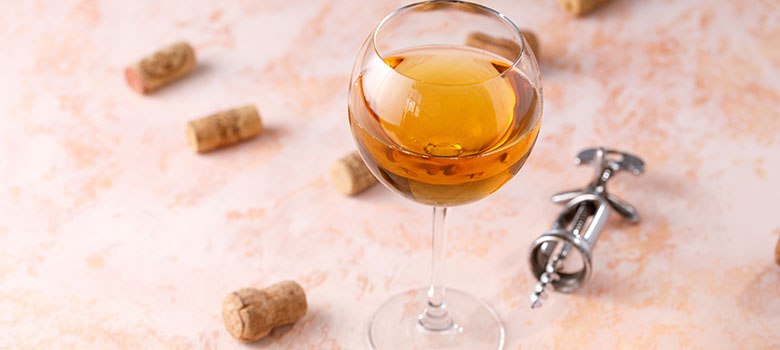
Wine
What is Fortified wine?
There are few things more delectable than a cheeky sip of Sherry or sweet wine after a big meal, especially on special occasions like Christmas or at a dinner party with friends. Sticky, strong, sweet or dry, fortified wines and dessert wines are a big part of wine history.
It may come as a surprise to discover that fortified wines were once some of the most consumed wines in the world. Nowadays things are a little different, and the classic table wines we all know and love like Shiraz, Cabernet, Chardonnay and Sauvignon Blanc reign supreme, but make no mistake – fortified wine styles still have a great deal to offer wine lovers in terms of diversity, flavour and sheer drinking pleasure. But what does fortified mean?
Here we answer all the burning questions you might have about this beloved wine style, from ‘what is considered a fortified wine?’ and ‘what are some examples of fortified wine?’ to ‘why is fortified wine so cheap?’ Let’s dive in!
Shop Fortified Wine
THE ORIGINS OF FORTIFIED WINE
Fortified wine is wine which has had a distilled spirit added to it in the winemaking process – most often brandy, but any neutral spirit distilled from grains, grapes or sugar can be used. What does fortifying wine do? The fortification serves multiple purposes – it enhances the alcohol content in the wine, makes it stronger or more stable (hence, ‘fortified’), and adds unique flavours.
So, can you drink fortified wine? Absolutely! Historically, wine was fortified so that it would keep better on long, overseas voyages, particularly during the so-called ‘golden age’ of exploration over the centuries where France, Spain and England competed for global dominance. The addition of ethanol helped preserve the wine on such maritime expeditions, keeping it for far longer than would be the case otherwise so that the explorers could still enjoy wine on their long journeys.
As a result, many nations have a signature fortified wine that they’ve made their own, like Port, from the northern provinces of Portugal. Indeed, the story of Australian wine was built upon fortified styles, which was our biggest wine export up to the 1960s.
Fortified wine comes in a number of styles. There are red fortified wines and white fortified wines, ranging from dry to sweet in flavour, as well as aromatic fortified wines like Vermouth, which is made with infused herbs and spices.
One thing all these different types of fortified wine have in common is that they make sensational aperitif (dry-style) or digestif/after-dinner wines (for the sweeter varieties). Grab yourself a small glass and sit back, as we take you on a brief tour of our favourite fortified wines!
WHAT TYPES OF FORTIFIED WINE ARE THERE?
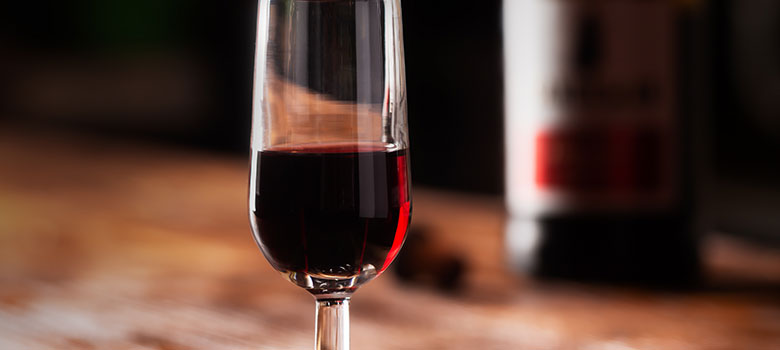
What is another name for a fortified wine? There are actually many different names and styles of ‘fortified’ wines – here are some of the most popular.
WHAT IS PORT? (AKA VINTAGE, OR TAWNY)
Australia’s favourite fortified wine is a style that originally hails from Portugal – most notably the Douro Valley in Portugal’s north – and is a traditionally sweet red wine where brandy has been added before the completion of fermentation. Nowadays, only those wines made in Portugal can lay claim to the Port name, but Tawny Port has a long history in Australia, with warm climate regions like Rutherglen, McLaren Vale, the Barossa and Riverland producing some of the best examples.
It gets the tawny name from its darker brown or tawny colour, a by-product of its ageing process, and while the varieties differ from winery to winery, Shiraz, Grenache, Mataro and Touriga are most commonly used in its making.
Full-bodied and luscious with rich flavours like hazelnut, raisins and dried fig, often with burnt butter and coffee notes, Australian Tawny is a style that has been aged in the barrel for some time before its release. As such, it’s intended to be enjoyed immediately, though you can keep it for some time – it just won’t develop further.
You can cellar port up to 15 years.
Port thrives in warmer regions and has a simialr weight to other fortified wines.
WHAT IS MUSCAT? (MUS-CAT)
Muscat’s story is a complicated one, as besides being a style of fortified wine, it is also a variety in its own right. As such, the Muscat name can be applied in many ways – from Moscato in Italy, to Moscatel in Spain and Portugal. Liqueur Muscat – often referred to as Brown Muscat – is one of only two styles of Australian wine that no other country can replicate, and is derived from the Muscat à Petits Grains Rouge grape (literally, ‘Muscat with little red berries’).
Like Tawny, Australian Muscat is primarily the product of warmer regions, with the most famous for the style being Rutherglen. Again, like Tawny it is aged in barrel over an extended period, concentrating the power and richness of the wine. Meant for immediate drinking, they can be cellared, but doing so will not improve or develop them further.
Sweet and luscious, Muscat is one of the richest and most powerful wines in the world, with classic aromas and flavours of dried fruits, espresso, tobacco leaf and chocolate.
Pair Muscat with rich chocolate dishes.
Did you know: muscat grapes are a popular fruit to eat.
WHAT IS TOPAQUE? (TO-PAI-K)
Formerly known in Australia as Tokay, after the Tokaj-Hegyalja region in Hungary’s north-east, Topaque is made from the light-skinned Muscadelle grape. While Topaque is the most common descriptor, you might also find it on the shelves as Fortified Muscadelle, or Liqueur Muscadelle. It’s made from semi-dried grapes that have been picked, partially fermented, then fortified with spirit distilled from grapes, before ageing.
Like Tawny and Muscat, it’s barrel-aged over some time, which concentrates the power and richness of the wine. Cellaring is possible, but the wine will not develop further, and they are released to drink now. Similar to Muscat, Australia’s Rutherglen region produces some of this country’s most notable examples, with over a century of production behind it.
In terms of flavour, Topaque is often considered a lighter, finer wine than Muscat, with flavours of candied fruits, honey, toffee, and a distinctive cold tea character – nonetheless, it is often crafted into deliciously big, sweet and definitely moreish wines that are almost a meal in their own right. Dry styles are ideal with soft cheeses, while sweeter examples make for the quintessential dessert wine.
Topaque has a medium to full body profile with a sweeter flavour.
Did you know: Muscadelle is a little known white grape from Bordeuax.
WHAT IS MADEIRA? (MAH-DAY-RAH)
An exotic Fortified white wine originating from the Portuguese islands of the same name, Madeira is somewhat similar to Port/Tawny, but comes in various styles from dry to sweet, all sharing common flavour notes of stewed fruit, caramel, roasted nuts and toffee, uniquely generated by being aged under heat.
Once a very popular wine among America’s upper classes, it’s not widely available in Australia except through specialist importers and has had a spotted history due to factors like disease and declining quality. Since the 1970s however, quality has once again begun to improve, and some Madeira can fetch a pretty penny indeed.
Made from Verdelho, Moscatel and numerous other ‘recommended’ or ‘approved’ grapes – determined by the Instituto do Vinho da Madeira – it may be experiencing something of a renaissance. Recipes will commonly list it as an ingredient, but real Madeira (as opposed to blended) it’s usually too expensive to use in cooking – try a decent quality dry Sherry or Muscat instead.
WHAT IS MARSALA? (MAA-SAA-LUH)
A fortified wine made in both dry and sweet styles, Marsala was first believed to have been produced in the region surrounding the Sicilian city of the same name. An English trader, John Woodhouse, fell in love with its flavour and introduced it to England in the late 18th century.
Different Marsala wines are classed according to colour, sweetness, and how long they’ve been aged for. Similar to Port and Tokay, it’s a regionally protected wine, so steer clear of any Marsala you find that doesn’t have Sicily on the label! Like other Fortified wines, it’s made by adding brandy or a neutral grape spirit but uses grapes indigenous to Sicily in a complicated winemaking process that, for amber Marsala (known as Mosto Cotto), includes the must – the freshly crushed juice of the grape – being cooked for some 36 hours.
Common flavours include vanilla and stewed apricot with the occasional notes of brown sugar, but more expensive examples tend to reveal a more nuanced spectrum of characters that includes cherry, tobacco, honey and more. Widely used in cooking, with dry styles used in dishes like chicken marsala, and sweeter styles in in desserts like tiramisu.
WHAT IS SHERRY? (AKA APERA)
A usually dry, Fortified wine where brandy is added after fermenting, Sherry hails from Spain, where it’s alternatively known as jerez or xérès. Spanish producers registered the name for exclusive use, and since 2010 Australian producers have complied, marketing the resulting fortified wine locally as Apera (derived from apéritif).
Once a style avoided by younger drinkers for being old-fashioned – a fate that other fortified wines have also had to contend with – today this attitude is slowly changing. Produced in a variety of styles, most Australian Sherry or Apera are made from Pedro Ximénez grapes and start out quite dry, with sweetness added through the winemaking process.
Depending on the style, a fine layer of yeast, known as flor, provides a kind of biological ageing that ‘caps’ the wine and slows oxidation when in the barrel, while imparting a distinctly nutty, even tangy character. Styles not aged under flor are typically fortified to a higher ABV, and may show richer characters and colours through the oxidation.
As a result, flavour profiles vary quite widely, ranging from those with briny, delicate acidity to luscious, viscous styles that are dark and sweet. In Australia, winemakers like Rutherglen’s Pfeiffer family and big names like Seppeltsfield of the Barossa are producing contemporary and classic Apera of exceptional quality.
IS VERMOUTH A WINE OR SPIRIT?
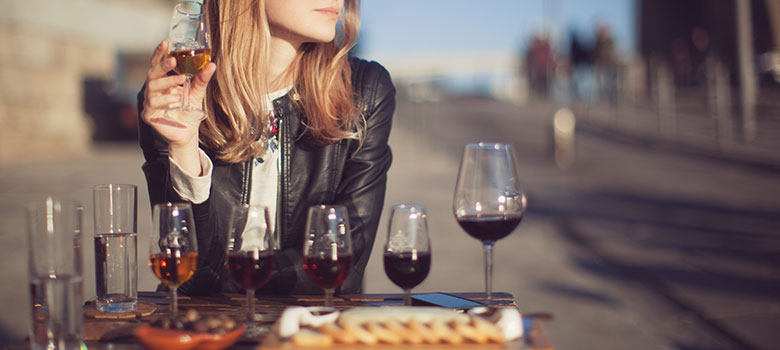
Despite the common misconception, Vermouth is not a spirit! Rather, it’s a sub-category of Fortified wine known as an aromatised fortified wine, infused with herbs, spices and often other botanicals like roots, barks, and flowers.
A popular addition to many cocktails – most notably Martinis – it can be enjoyed as a drink in its own right, though it’s certainly not to every wine lover’s taste! In their popular work, The Ultimate Encyclopedia of Wine, Beer, Spirits and Liqueurs, authors Stuart Walton and Brian Glover describe Vermouth as being “as far removed from the natural produce of the vine as it is possible for a Fortified wine to get.”
IS PORT HEALTHY TO DRINK?
Some people argue that moderate consumption of Port can have potential health benefits.
When it comes to the question of whether port is a healthy beverage choice, there are various perspectives to consider. Some people may argue that moderate consumption of port can have potential health benefits.
Port wine, like other wine styles, contains antioxidants, such as resveratrol, which are known for their potential positive effects on heart health. These antioxidants may help reduce the risk of certain cardiovascular conditions. Additionally, port wine is often enjoyed in smaller serving sizes, encouraging moderation.
However, it's important to note that port wine is also relatively high in sugar and alcohol content. Therefore, it's important to enjoy port in moderation, appreciating its potential health benefits while being mindful of its overall impact on your well-being.
ARE FORTIFIED WINES THE SAME AS DESSERT WINES?
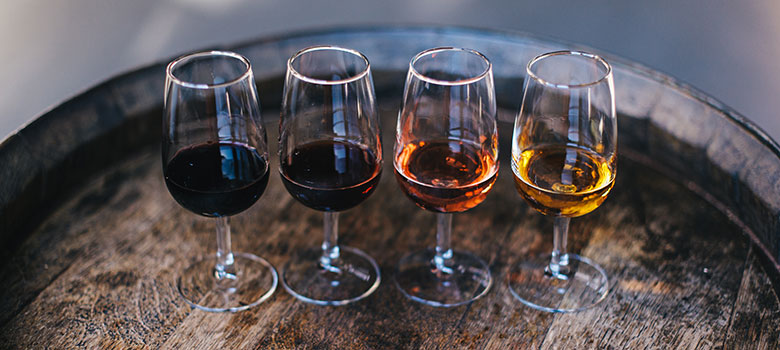
Are fortified wines and dessert wines the same thing? Well, yes… and no!
While many Fortified wines can be considered as dessert wines, many – particularly the dryer-styles – are more suited to enjoying before dinner as apéritifs alongside crackers and cheese or similar amuse-bouche. Sweeter, less strong styles (especially those made from white grapes) tend to accompany sugary after-dinner treats. Some wines, like late harvest wines (also known as Botrytis wines, for the unique mould that results in their sweet, rich flavours), also fall into the category of dessert wines.
In the United States, however, many fortified wines are referred to as dessert wines, to avoid the connotations of ‘hard drinking’. The French, meanwhile, refer to such wines as vins de liqueur.
WHY IS FORTIFIED WINE SO CHEAP?
Ever wondered why fortified wine often comes with an affordable price tag? One of the main reasons is that fortified wines undergo a unique production process that allows for longer shelf life compared to regular wines. This means they can be stored and enjoyed for extended periods without spoiling.
The addition of distilled spirits also contributes to cost savings in production and storage, making fortified wines more budget-friendly. So, if you're looking to indulge in a flavour-packed glass of goodness without breaking the bank, fortified wines might just be your go-to option.
WHAT FOODS PAIR WITH FORTIFIED WINES?
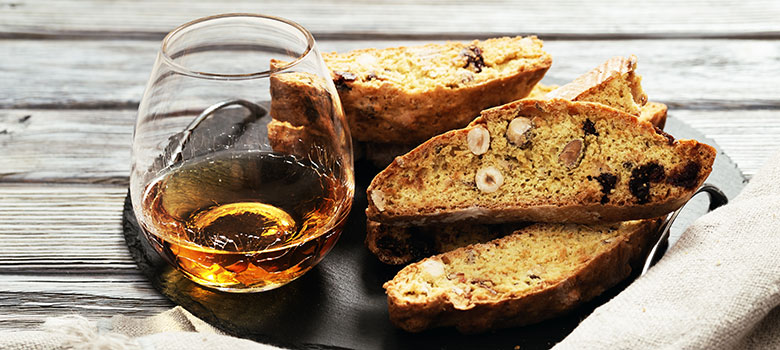
Looking for the best way to serve Fortified wine? Whether you’re hungry for a tasting plate loaded with cured meats or have a real sweet tooth, it’s surprisingly easy to find a match for these delicious wine styles.
For more inspiration check out these classic Christmas fortified wine food pairings inspiration, or file away these Valentine Day food and dessert wine winners for future reference!
Want to learn more about how other types of wine are made? Wine Selectors has you covered with this deep dive on the making of Rosé. There’s no better excuse to pour yourself an Apera, pop a slice of prosciutto on a cracker, and enjoy!